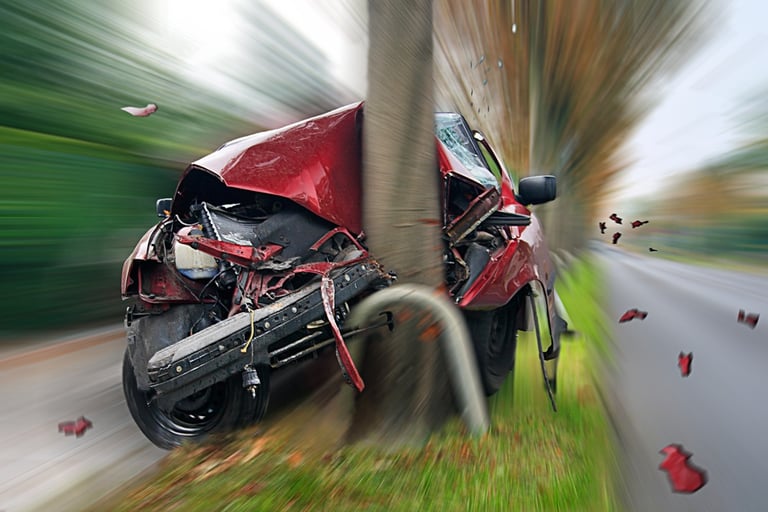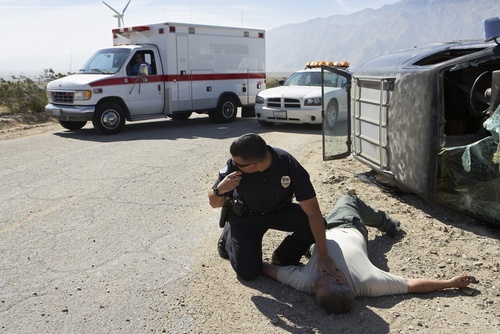
The first part of this topic discussed the dangers of drowsy driving, who is most at risk and how to stay awake. This conclusion talks about what you can do to avoid being a drowsy driver and what actions are being taken by individuals, workplaces, schools and governments to protect the public safety by eliminating drowsy driving.
Keep Yourself and Everyone Else Safe -
Practice Good Sleep Hygiene
Sleep Hygiene is a set of actions you incorporate into your life to help yourself sleep better and awaken refreshed.
Give yourself enough time to sleep, in a quiet, cool, comfortable bedroom.
Go to bed when drowsy, but get up at the same time each day.
Don’t eat a big meal, drink alcohol or caffeine, or smoke within a few hours of bedtime.
Avoid the blue light glare from TV, computer and phone screens a few hours before bedtime.
Associate your bed with sleep. Do not talk on the phone, play video games or watch TV in bed.
Get adequate amounts of natural light during the day.
Exercise for good health but not too close to bedtime.
Establish a relaxing bedtime ritual, which may include a warm bath, reading a good book, meditation or other relaxing activity.
Drowsy Driving Solutions
Legal actions
New Jersey and Arkansas are the only states that have drowsy driving laws on the books. Other states are debating law enactment and some have voted down legislative bills regarding drowsy driving. Though legal ramifications are a step in the right direction to protect the public, drowsy driving laws are difficult for police officers to enforce and for courts to convict. 
A few states have initiated Drowsy Driving Day Week to educate the public, and more states are enacting these types of public awareness campaigns.
Teen Drivers
Male teen drivers are involved in a high percentage of drowsy driving accidents. Several factors contribute to this, and resolving the teen drowsy driving problem must be dealt with by initiating multiple actions to address the various factors.
Later School Start Times
Adolescents require 8.5 to 9.5 hours of sleep per night. As mentioned in Part I, teens suffer from delayed sleep phase. This sleep disorder prevents adolescents from falling asleep before midnight or 1:00 a.m. With school start times as early as 7:20 a.m., it is obvious that adequate time for sleep is not possible for these teens.
Getting only five hours of sleep causes excessive daytime sleepiness. Sleep debt accumulates quickly in teens and leaves them vulnerable to drowsy driving, poor grades, poor decision-making skills and a greater chance of engaging in riskier, more dangerous behavior.
Approximately only 31 percent of students get sufficient sleep. As more middle and high schools delay start times, more and more students are getting more sleep.
School districts with later start times report an improvement in student grades, attendance, and athletic performance, as well as a reduction in tardiness.
In addition to the school-related improvements, there has been a decrease in overweight/obese students and a decrease in student depression. Since these students are getting sufficient sleep, the adverse effects of sleep deprivation such as obesity and depression are reduced or eliminated.
Teen vehicle crashes have also reduced. In a study of later-starting schools, the number of car crashes decreased by 13 percent for 16-to-18 year old drivers. In a Jackson Hole, Wyoming high school where students got more than eight hours of sleep, their crash rate fell 70 percent.
Dr. Mary Carskadon, a professor of psychiatry and human behavior at Brown University, focusing on sleep medicine, has been a strong advocate for later school start times for adolescents since 1981. Now school boards and state officials are taking notice and enacting Dr. Carskadon's recommendations.
State and federal officials are pressuring their governing bodies to pass bills to push back school start times. Resistance comes from school districts that point to school bus schedule problems and after-school curriculum conflicts, and from parents who have daily morning routines and pick-up schedules.
However, students are for the later start times. When one school district wanted to make the start time earlier than it was, students protested and persuaded the district to start the school day later than it currently was at the time.
Nighttime Driving Restrictions
All 50 states have Graduated Driver License (GDL) laws which limit the amount of time teens under the age of 18 can drive at night. These laws have reduced crashes during those restricted times from 40 to 60 percent. However, in one state’s analysis, 18- and 19-year olds had the highest crash rate of all age groups.
There is a push to amend the GDL laws to include harsher penalties (either monetary, license suspension or both), restrictions on passengers in the vehicle, driver’s education requirements, and the development of a public awareness campaign,  informing parents and students of the dangers of drowsy driving.
informing parents and students of the dangers of drowsy driving.
Because of the high crash rate of 18- and 19-year olds, education of this population is especially important.
Driver Education
The Tracy Morgan accident brought the dangers of drowsy driving to the public’s attention. Educating the public about drowsy driving is the first step toward its elimination.
Steps are being taken on various fronts for this education to occur. Educational opportunities could include public school driver’s education programs, commercial driving schools, and state requirements for completion of a driver safety course, which includes the effects of fatigue on driving ability and health.
For those states that do not require a formal driving course for teen licensing, it is essential that other educational opportunities, such as online, interactive or simulator teaching methods, be employed to educate teens, their parents and the public.
Workplace Attitude
Fatigue causes businesses $136 billion annually. Costs include work-related accidents, both on the road and on business premises, absenteeism and poor performance.
Businesses can reduce employee drowsiness by moving shifts forward, reducing the number of times workers change shifts, providing exercise breaks, and creating a bright environment for those working the night shift.
Companies can prioritize sleep by encouraging employees to take vacation, limiting overtime hours, providing health/wellness programs, and providing rest periods and nap rooms. All these changes result in improvement in their bottom line.
Changes for High-Risk Occupations
In addition to young male drivers, police officers, medical personnel and commercial motor vehicle drivers are also at a high risk for drowsy driving. Emphasis is being placed on education of these 24/7 employees.
Few police agencies have fatigue-prevention programs in place. Suggested areas for improvement include minimizing shift changes and overtime, allowing time between shifts for adequate rest, requiring officers to complete training to manage their fatigue by addressing their overall health, weight issues, and sleep disorders, providing nap rooms for tired officers, and monitoring fatigue levels by management or other officers.
Medical workers, espe cially residents and interns, are forced to work long hours each day for extended days, creating a high risk for drowsy driving and overall poor health.
cially residents and interns, are forced to work long hours each day for extended days, creating a high risk for drowsy driving and overall poor health.
Health care associations prohibit physicians from working more than 80 hours per week, more than 24 consecutive hours, more than six consecutive night shifts, require on-call duty to be no more than once every three days, and mandate at least four days off per month.
Nurses, on the other hand, do not have such formal restrictions, and about 20% of nurses stay past their end shift time to care for patients or complete paperwork. Drowsy driver education is a must for hospital personnel to safeguard them from driving-home accidents and to educate patients.
Commercial vehicle drivers are at very high risk for drowsy driving, and many costly and deadly accidents are the result. As stated in Part I, there is strong resistance from truck drivers, trucking companies and retail businesses (like Walmart) to restrict driving hours.
Truck drivers can manipulate the system to avoid dealing with their sleep apnea, and some trucking companies do not comply with regulations or enforce driver compliance to treatment.
The various federal, state and trucking associations are coming together to address the various resistant factions in order to create and enforce rules to ensure safety for both the commercial drivers and the general public.
Summary
Drowsy driving is a major concern that threatens our public safety. Strides have been made in the past several years to identify high-risk drivers and take action to educate them, create programs or make changes that would help them reduce their risk, and enforce regulations for non-compliance. Though slow in coming, these changes are improving the health and safety of our nation.
Sources:
Drowsy Driving, http://sleepcenter.ucla.edu/drowsy-driving
Sleeping and Driving, http://sleepmedicine.com
National Sleep Foundation, www.sleepfoundation.org
Julia Steele Rodriguez, Driving Drowsy vs. Driving Drunk, www.sleepdr.com
Alan Mulgrew, University of British Columbia, Vancouver, Canada
Sleep Education, www.slepeducation.org/sleep-topics/drowsy-driving
Robert Preidt, Drowsy Driving Causes 1 in 5 fatal Crashes, HealthDay Reporter. 8/8/2016
Governors Highway Safety Association, Wake Up Call! Understanding Drowsy Driving and What States Can Do
Krithika Varagur, Huffington Post, Drowsy driving Kills thousands Every Year
Summaries of Current Drowsy Driving Laws, www.ncsl.org, 2015
Start Schools Later, www.startschoollater.net/success-stories.html
Image Credits:
Shutterstock.com








Leave a comment